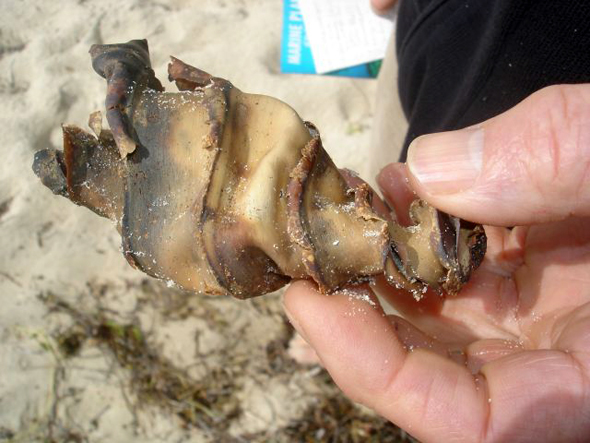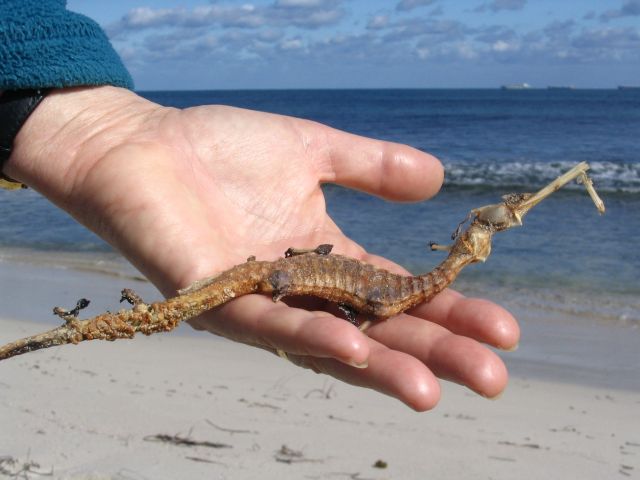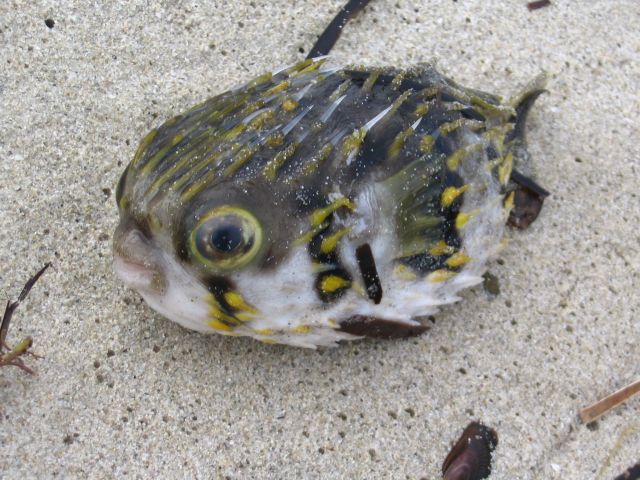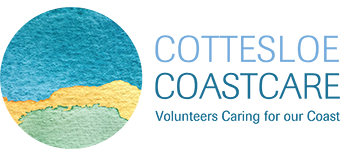Fish
Fish or their bones are sometimes found and also the leathery egg-cases of Port Jackson sharks that are spiral shaped and dogfish egg-cases that look like a purse with horns.
For lots more information about our local fish see the great booklet Perth Fish: Explore, identify, enjoy! There is an excellent identification guide at the end.

Common name
Egg case of a Port Jackson shark
Scientific name
(Chordata: Vertebrata)
Description
This is a leathery, spirally-flanged egg-case. The shark twists it into a rock crevice, where the young develop for about a year before hatching. The Port Jackson is a common small shark which is not dangerous except for its venomous dorsal barb. It eats bivalve molluscs.

Common name
Seadragon
Scientific name
Phyllopteryx taeneolatus
Description
This is the common or weedy seadragon. This species, together with the more spectacular Leafy Sea-dragon, lives among the large seaweeds on our reefs. They are fish and are related to seahorses but without the prehensile tail and brood pouch. The male holds the eggs under his tail after the female has laid them. In 2011 Cottesloe Coastcare was instrumental in having the weedy seadragon classed as a protected species in Western Australia. Read more here.

Common name
Globefish
Scientific name
Diodon nicthemerus (Chordata: Vertebrata)
Description
This species has a dark grey back, a white belly and yellow spines. It belongs to the group of spiny, slow-moving fish called Porcupine fish. Along with Pufferfish they can inflate their body by ingesting water or air. The flesh is deadly poisonous.
Cottesloe Coastcare Association
PO Box 32
Cottesloe WA 6911
info@cottesloecoastcare.org
Sign up to our Newsletters
To stay up to date with our news and upcoming events.
